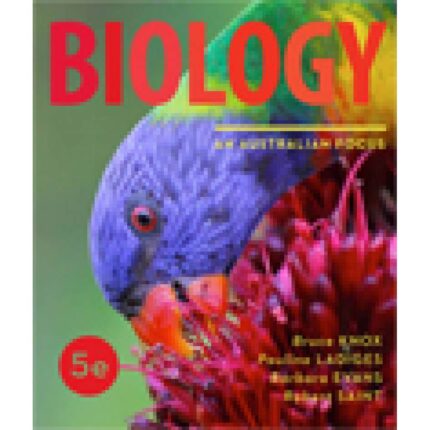Chapter 11
Mendelian Patterns of Inheritance
Multiple Choice Questions
- Which of the following reasons helped make Mendel successful with his genetic experiments?
A. He had a strong background in mathematics.
B. He was very deliberate and followed the scientific method closely while doing his research.
C. He kept very detailed records of his research.
D. He was basing his research off of preexisting research.
E. All are reasons Mendel was successful with his genetic experiments.
All are reasons Mendel was successful with his genetic experiments.
Bloom’s Level: 2. Understand
Learning Outcome: 11.01.01 Describe how Mendel’s scientific approach enabled his genetic experiments to be successful.
Section: 11.01
Topic: Mendelian Genetics
- Which of the following is NOT a trait that is the result of, or is affected by, the interaction of more than one gene?
A. human skin color
B. cleft palate
C. height
D. sickle cell anemia
Bloom’s Level: 2. Understand
Learning Outcome: 11.04.04 Explain the concept of polygenic and multifactorial traits.
Section: 11.04
Topic: Non-Mendelian Inheritance
- Which of the following crosses would always result in offspring that only display the dominant phenotype?
A. TT x tt
B. Tt x Tt
C. TT x TT
D. Tt x tt
E. Two of the crosses will always display the dominant phenotype
Both TT x TT and TT x tt will always result in offspring that only display the dominant phenotype. On average, one-fourth of the offspring of Tt x Tt will be tt and will not display the dominant phenotype. On average, one-half of the offspring of Tt x tt will be tt and not display the dominant phenotype.
Bloom’s Level: 4. Analyze
Learning Outcome: 11.02.02 Compare and contrast dominant alleles with recessive alleles and their relation to genotype and phenotype.
Section: 11.02
Topic: Mendelian Genetics
- What aspect of Mendel’s background gave him the necessary tools to discover the laws of inheritance?
A. He was a monk.
B. He was a teacher.
C. He lived in Austria.
D. He had studied mathematics and probability.
E. He corresponded with Charles Darwin.
Bloom’s Level: 1. Remember
Learning Outcome: 11.01.01 Describe how Mendel’s scientific approach enabled his genetic experiments to be successful.
Section: 11.01
Topic: Mendelian Genetics
- What is the blending theory of inheritance?
A. Mendel’s theory of how the traits of parents are passed to offspring through the gametes
B. Darwin’s theory of how traits are passed from all parts of the parent’s body into the gamete to be transmitted to the offspring
C. The modern theory of how genetic information is passed from parents to offspring
D. An old theory that said that offspring show traits intermediate between those of the parents
The blending theory of inheritance was an old theory that said that offspring show traits intermediate between those of the parents. In Mendel’s theory, traits do not blend but remain discreet.
Bloom’s Level: 1. Remember
Learning Outcome: 11.01.02 Contrast blending and the particulate concept of inheritance.
Section: 11.01
Topic: Mendelian Genetics
- Which characteristic of pea plants were important in their selection as Mendel’s research organism?
A. Peas are easy to cultivate.
B. Pea plants have a short generation time.
C. Pea plants are self-pollinating but can be cross-fertilized easily.
D. Many true-breeding varieties were available.
E. All of these were important characteristics in Mendel’s selection.
All of the factors listed were important in Mendel’s selection of the pea plant.
Bloom’s Level: 2. Understand
Learning Outcome: 11.01.01 Describe how Mendel’s scientific approach enabled his genetic experiments to be successful.
Section: 11.01
Topic: Mendelian Genetics
- In a classic Mendelian monohybrid cross between a homozygous dominant parent and a homozygous recessive parent, which generation is always completely heterozygous?
A. F1 generation
B. F2 generation
C. F3 generation
D. P generation
The F1 generation is always heterozygous in a Mendelian monohybrid cross.
Bloom’s Level: 2. Understand
Learning Outcome: 11.02.03 Use a Punnett square and the law of probability to predict the chances of producing gametes and offspring.
Section: 11.02
Topic: Mendelian Genetics
- If a pea plant shows a recessive phenotype,
A. the genotype may be TT or Tt.
B. the genotype may be Tt or tt.
C. the genotype can only be TT.
D. the genotype can only be tt.
E. the genotype may be TT, Tt, or tt.
If a pea plant shows a recessive phenotype, the genotype is tt. TT and Tt both express the dominant trait.
Bloom’s Level: 3. Apply
Learning Outcome: 11.02.02 Compare and contrast dominant alleles with recessive alleles and their relation to genotype and phenotype.
Section: 11.02
Topic: Mendelian Genetics
- Women with X-linked disorders always pass the genes for the disorder to ______, while men with X-linked disorders always pass the genes for the disorder to _______.
A. only their daughters; only their daughters
B. both their daughters and sons; only their sons
C. both their daughters and sons; only their daughters
D. both their daughters and sons; their daughters and sons
Women with X-linked disorders always pass the genes for the disorder to both their daughters and sons, while men with X-linked disorders always pass the genes for the disorder to only their daughters.
Bloom’s Level: 3. Apply
Learning Outcome: 11.04.05 Understand how X-linked inheritance differs from autosomal inheritance.
Section: 11.04
Topic: Sex-Linked Inheritance
- The F2 offspring of a classic Mendelian monohybrid cross between homozygous dominant and homozygous recessive parents would produce the genotype(s)
A. AA and Aa.
B. Aa and aa.
C. AA, Aa, and aa.
D. AA only.
E. Aa only.
The F2 offspring of a monohybrid cross would show the genotypes, AA, Aa, and aa.













Reviews
There are no reviews yet.